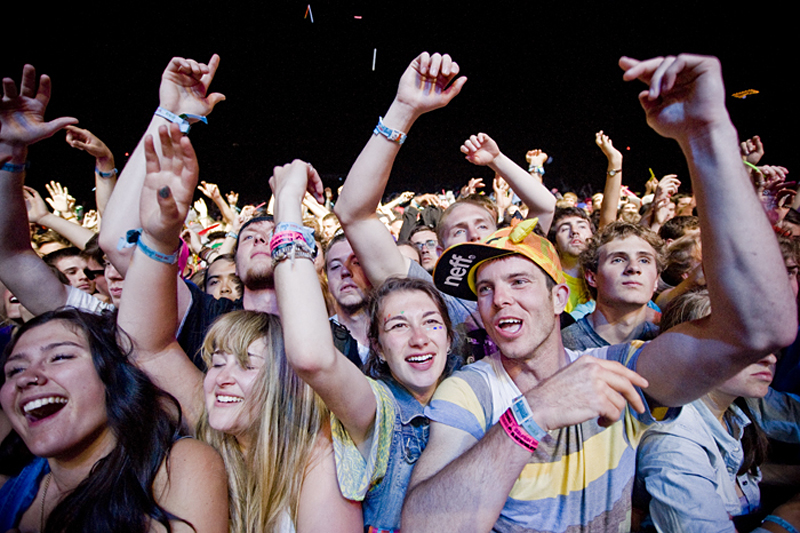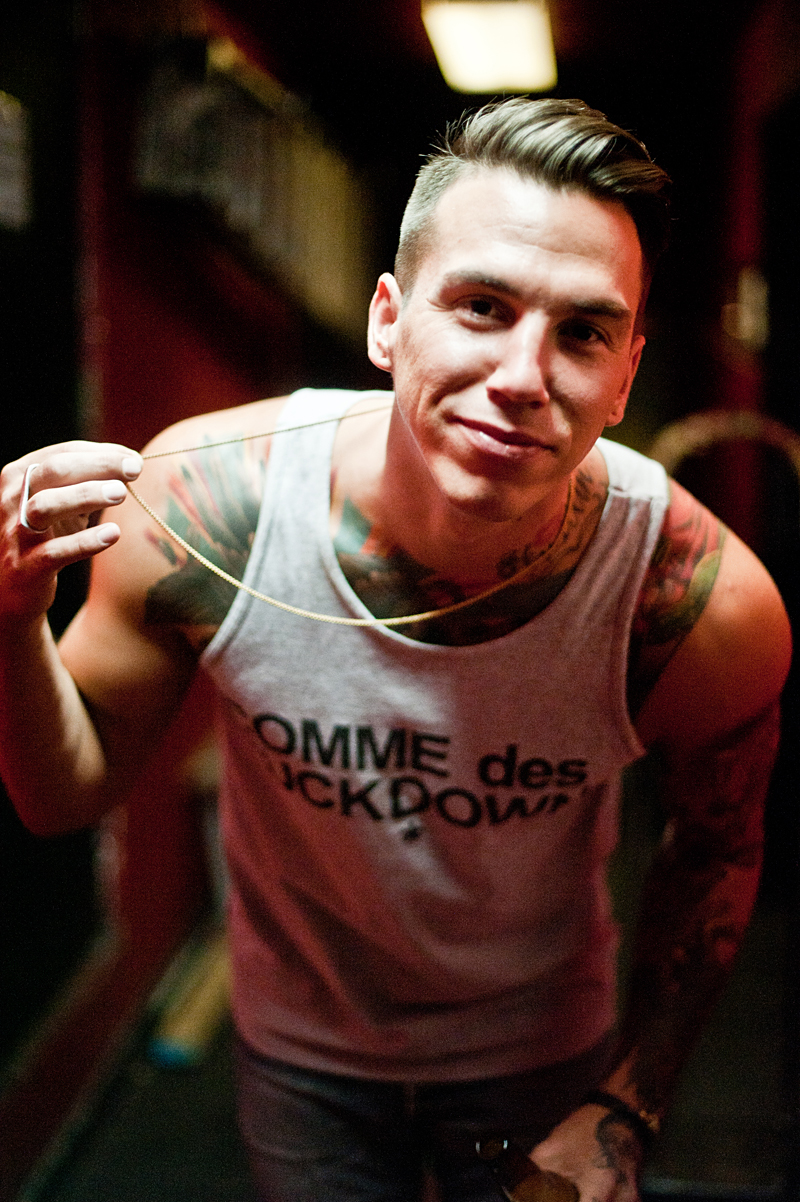On the night before St. Patrick’s Day, I hopped on a downtown-bound bus in the U District that was packed standing-room-only with college kids decked out in green and gold American Apparel like trashy leprechauns, chatting loudly about the night to come. One girl who’d stopped to talk at the bus stop had the unmistakable saucer-eyed stare of someone high on E—or, as the kids (and Madonna, bless her) are calling it, “Molly.” The final destination for, it seemed, everyone on board except me was the 7,000-capacity WaMu Theater, where Calvin Harris—a Scottish electro-house producer and scorer of #1 hit “We Found Love” with R&B star Rihanna—was headlining a holiday-themed party.
I tell this story because it neatly encapsulates a few truths about electronic music in 2012: 1) It’s big—probably bigger than it’s been since the “electronica” boom of the ’90s. It even has a dorky new name that no one who listens to the stuff would ever say in real life: “EDM,” for “electronic dance music.” 2) It’s mainstream, breaking onto the pop charts via tunes with Euro-trance as their pulse, from LMFAO to Lady Gaga to Katy Perry. 3) Its rising stars are playing larger, more frequently all-ages (or 18-and-over) venues, reaching a new wave of young fans for whom body-vibrating bass, elevating drugs, and glow sticks aren’t retro signifiers of ’90s nostalgia but an entirely new experience. 4) It’s arrived in Seattle.
This summer, two of the shining young stars of “EDM” come to Seattle headlining two festivals, one new, one old. On Saturday, Swedish progressive house DJ Avicii (22 years old) headlines the debut of USC’s Paradiso Festival at the Gorge, along with such names as Afrojack, Digitalism, and more. In September, dubstep phenom Skrillex (24) will close out Bumbershoot, which is also doubling down on their Decibel-produced “Bumbershoot After Dark” electronic after-events by including admission with all regular festival tickets.
These are the local effects of a trend that has been accelerating nationally. In the past year, Skrillex has been on the cover of SPIN, and he and similarly massive-and-rising acts like Avicii and Deadmau5 have garnered substantial, trend-identifying coverage from such august publications as The New Yorker and The New York Times. Earlier this month, a sold-out crowd of 30,000 attended Las Vegas mega-rave the Electric Daisy Festival. Days before that, entertainment mogul Robert F.X. Sillerman, whose nationwide consolidation of venues, SFX Entertainment, became Live Nation, had announced plans to acquire electronic-music venues and events to the tune of $1 billion.
Of course, Seattle has long had its own small but thriving electronic-music scene, with companies like Decibel and USC throwing everything from small club nights to the acclaimed multivenue, weekend-long Decibel Festival and USC’s annual Halloween big-room rave Freak Night. So what does this new wave of popularity and flood of new fans mean for electronic music in Seattle? Will the high tide raise all boats, or will the deluge drown out or dilute our city’s carefully cultivated electronic scenes?
“We’re extremely excited to see the recent surge in popularity,” says USC’s Doug McIntyre. “Over the last 15 years, we have certainly experienced peaks and valleys in the level of support for electronic dance music in the Pacific Northwest, but the size of our crowds has been on the rise for the past two-plus years now.
“So many elements are coming together right now and contributing to EDM’s recent rise in popularity,” McIntyre continues. “You’ve got pop stars working with some of dance music’s elite producers to create hits that are climbing up the charts and being supported by top-notch music videos. In the past, those producers would’ve worked behind the curtain; nowadays, they’re often promoted as contributing artists, and consequently some have achieved household-name status.”
Other players in Seattle’s electronic scene are equally optimistic. “I think the surge [in mainstream popularity] is a great thing for youth in Seattle who don’t have the ability to see 21-and-over shows,” says bass-music producer and Car Crash Set label head Ill Cosby.
Rafael Anton Irisarri, who records for the Ghostly International label as The Sight Below and who will host the second annual edition of Seattle’s experimental/ambient festival Substrata, August 3–5, agrees. “One of the things that blew my mind last year at Substrata were some of the younger generation that came to both evenings,” he says. “We’re talking 16-year-olds and such. I was very happy to see them exposed to things like Biosphere and Oren Ambarchi.”
And even if our local electronic movers have reservations, they remain largely positive. “What has been difficult,” acknowledges Decibel Festival’s Sean Horton, whose bookings this year include pop artist Kimbra and whose past bookings have brought globe-trotting producer Diplo and a pre-fame Deadmau5 to town, “is the plethora of festivals and insanely high fees [now] associated with electronic-music artists, many of whom we helped break in Seattle going back to 2005. It’s an age-old problem, and for me it just means that I have to continue mining for fresh talent.”
“It’s surely not the best music,” says Cosby of Skrillex and Avicii. “But it’s something for young people at a crucial age in their development. I don’t feel like the music itself has damaged or bolstered the Seattle electronic-music scene—I think larger electronic-music draws run in a different parallel world to Seattle’s electronic-music scene with little to no crossover.
“Some of the kids who see large festival performances are the ones who’ll be future DJs, producers, and concertgoers,” he continues. “I’m absolutely a product of the last big breakthrough of electronic music into the mainstream during the late ’90s—I saw The Crystal Method at a suburban hotel banquet room. I couldn’t have had more of a mainstream introduction to electronic music than that.”






